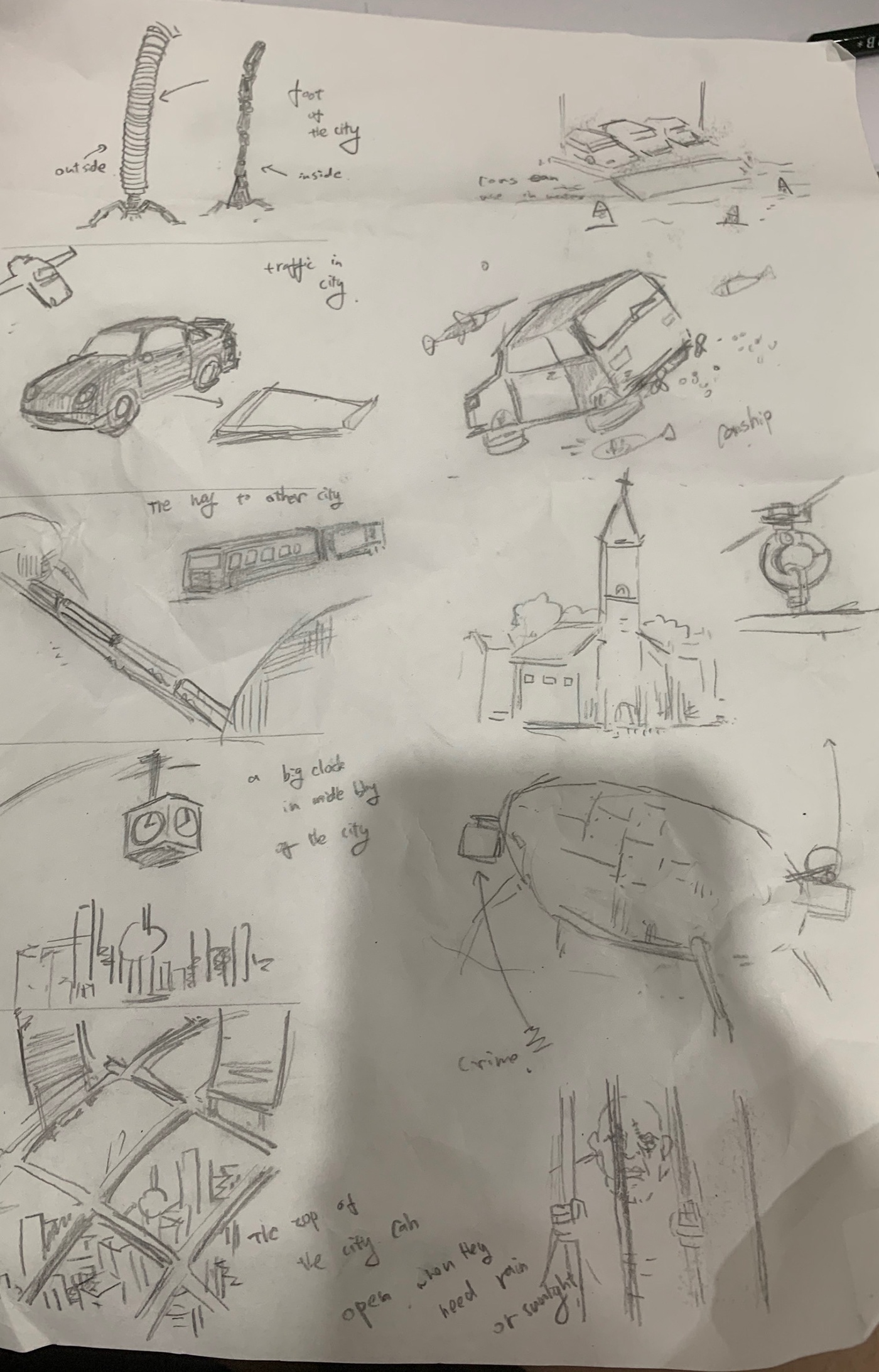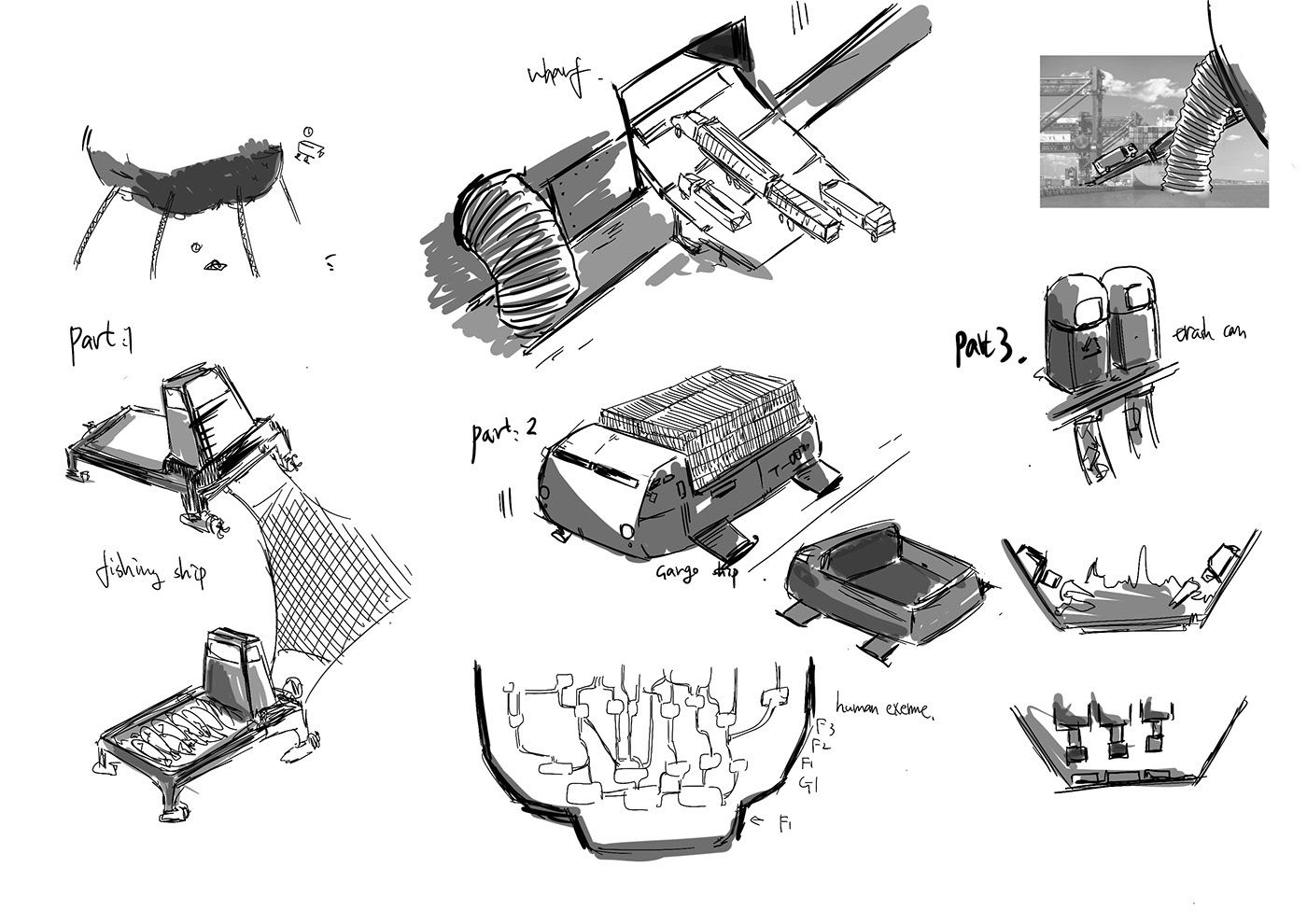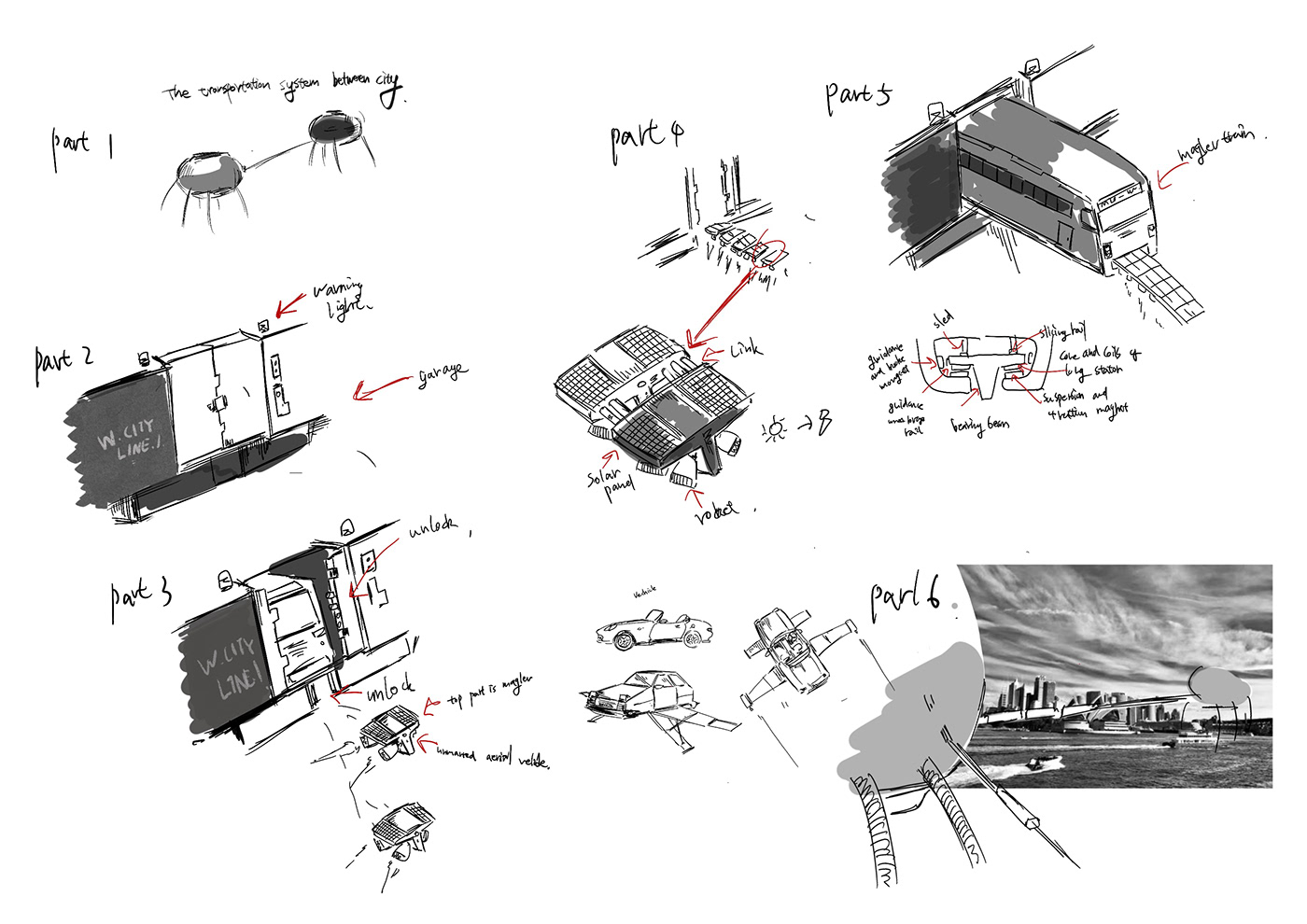The project I chose in this assignment is walking city Archigram. Archigram is an avant-garde architectural group of the 1960s. It is a new futuristic, anti-heroist and pro-consumer, drawing inspiration from technology to create a new reality that can only be expressed through hypothetical projects.
The walking city is a giant robot that can walk. This form is a combination of insects and machines. It is the motto of Le-Corbusier. The fable house is a living machine that can be replenished at any time.
The pedestrian city can cross the ocean, a city that represents a utopian-military submarine that combines an insect-like exoskeleton with retractable legs. Each unit of the city contains a comprehensive set of urban resources. This shoe alone city can be connected to each other by a connected tunnel

This is a preview of my ps, depicting the scene where the walking city moves through the sea. I first read the pictures of the earliest walking city. After that I read the relevant documents, then referenced the submarine, and also referred to the characteristics of the insects. I drew this picture. I used Darling Harbour in the background because it was the earliest. Walking city is also in the sea, and before that I also drew a few drafts describing the overall appearance of the moving city, the details of the legs, the transportation of the city station, the repairman, but I wanted to put the city Style made into the feeling of the 60s






Then I began to think carefully about a city as an independent unit where people live, which means that the city needs to operate independently of any city in the world, including having a transportation system, how to drain waste water and getting Fresh water, how to deal with garbage, and how the city gets its power, including the import and export of the city, and the need to combine uts and visual communication to express my homework, so I drew the following picture
The first is to combine the 2019 design. If the mobile city wants to cross a city, it must be too slow. The fastest way must be to fly from the air, so I painted the city from the walking mode in part 1. For the flight mode process, it is also introduced that the top of the city is made of solar cells and smart dimming glass, which means that the electricity used by residents can be generated by solar energy, and if the sunlight is too large, these glasses It can automatically adjust the transparency to prevent UV damage. These glasses are composed of honeycombs. The honeycomb has strong support and the glass is broken. Part 2 is a schematic view of the cross section. The first floor is planting vegetables. The shed, while the 2nd floor is the pasture, the G floor is used to place the cargo and the city's engine, and part 3 is to explain how the legs support the city in walking mode, because there is a pump at the bottom of each leg, which can Water is pumped to the G layer (part 4 visible), while the pressure fills the legs to support the weight of the city, part 4 introduces the filtered seawater through filtration People's drinking water, when the city is converted to flight mode, the six jets hidden in the bottom of the city will flip outwards, and the legs will shrink back into the city. The picture in the upper part of part 4 describes the internal structure of the legs. Including the principle of material and folding shrinkage.

Part 1 of this picture shows how residents of the city get food in the sea, that is, at the bottom of the walking city there will be fishing boats with fishing nets running in the book for fishing, and part 2 is to introduce the city's import and export. When the city needs to import and export some goods, it will stop at the port, and sometimes it will be transported to the walking city by transport aircraft. In this part, I first tried to combine the real scene and painting, that is, the style of visual communication. Reflect the part of the dock. Part 3 is used to introduce the garbage in the city. There is a passage under each trash can. After that, the garbage can be recycled and transported to another city for processing and then used. The non-recyclable garbage is incinerated and then harmful. Emission after filtration


This picture is a description of the city's transportation system. Part 1 shows how to get from a walking city to another walking city. The way I think is to do this through a maglev train, because the maglev train runs very fast, and the key is The track between the cities should be composed, so I explained it in part 2 to part 4. First, the two doors at the part 3 station were opened at the same time. The upper part of the door is a maglev train, and the lower part is a kind. T-shaped drone, this drone has a small rocket underneath as the power, the upper part is the magnetic levitation track and the solar absorbing plate, while the part 4 is for amplification analysis, each drone is a small track, These small unmanned connections can be joined together to form a complete track. Part 5 introduces the operating principle of the maglev train and the appearance of the maglev train. Part 6 is my second attempt to visually represent the city. The traffic between the two, while the flying car next to it is also an idea of my future city traffic.

The last painting is an expression of how I combine UTS and walking city to explore what traffic should do when walking city is flying above the city. Part 1 depicts the scene above the UTS business building, part 2 introduced If people think of UTS buildings, they only need to take the corresponding spacecraft. The spacecraft is inspired by buses and transport planes. Part 3 is about the spacecraft that will stop at the corresponding sites. These sites are located in Sydney, part 4 I combined the Railway square near UTS and introduced that if I want to take this spacecraft, I need to swipe the card, and the design of the card area is the same as that of a normal subway station.



Finally I integrated these files together to make this completed picture

This assignment gave me a lot of time to think about it. If you really want to design a city, you need to think about it. At the same time, you can make many improvements with the help of the teacher. At the same time, you should not only consider the city involved, but also consider using visual communication. Artistic techniques to express the city
Reference list
2013, Gallery label from Cut 'n' Paste: From Architectural Assemblage to Collage City, viewed 25 December 2019, <https://www.moma.org/collection/works/814>
McQuaid, M. 2002, Envisioning Architecture: Drawings from The Museum of Modern Art, New York: The Museum of Modern Art p. 150, viewed 25 December 2019, < http://www.vam.ac.uk/content/articles/a/archigram-walking-city-living-pod-instant-city/>
Cline, B. and Carlo, D. 2002, The Changing of the Avant-Garde: Visionary Architectural Drawings from the Howard Gilman Collection, viewed 25 December 2019, <https://www.seasteading.org/walking-city-archigram/>
<http://www.kongjun.com/ztm/0053/> Accessed 20/11/2019
<https://zh.compathy.net/magazine/2019/09/20/japan-garbage-recycle/> Accessed 20/11/2019
